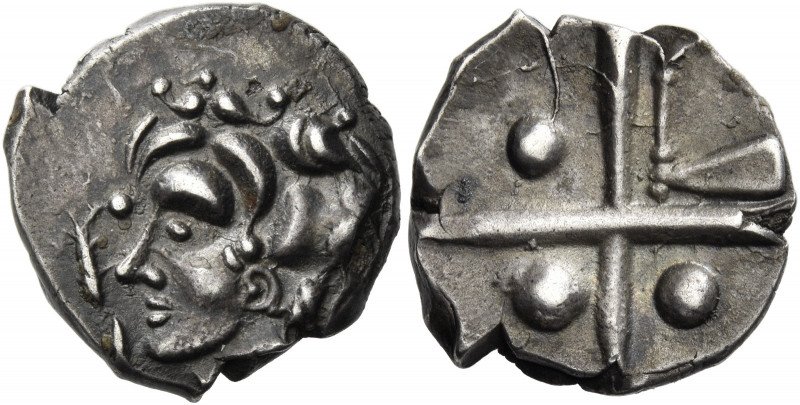How to Determine the Value of Ancient Coins: A Collector’s Guide
1. Introduction
Do you want to learn how to determine the value of ancient coins? Well, ancient coins are fascinating relics of history, often carrying immense historical and monetary value. But how can you determine the worth of an ancient coin in your possession? Whether you are a collector, investor, or just curious, understanding the factors that influence an ancient coin’s value is crucial. In this guide, we’ll cover how to evaluate ancient coins based on rarity, metal content, condition, provenance, and market demand.
2. Key Factors That Determine the Value of Ancient Coins
2.1. Rarity: The Scarcity Factor
The rarer a coin, the higher its value. Coins minted in limited numbers or from short-lived rulers tend to be more valuable. Some factors affecting rarity include:
- Low mintage – Some ancient coins were struck in small quantities.
- Historical events – Coins from short-lived reigns or rare mints are highly desirable.
- Survival rate – Many ancient coins were melted down or lost over time.
💡 Example: The Eid Mar Denarius (issued by Brutus after Julius Caesar’s assassination) is one of the rarest and most valuable Roman coins.
2.2. Metal Content: Gold, Silver, or Bronze?
The metal composition of a coin greatly impacts its value.
- Gold coins (e.g., Roman Aureus, Byzantine Solidus) are typically the most valuable.
- Silver coins (e.g., Greek Tetradrachm, Roman Denarius) hold significant worth due to their intrinsic metal value.
- Bronze coins (e.g., Roman Sestertius, Byzantine Follis) are usually less valuable but can still be rare.
💡 Tip: A genuine ancient gold coin will have a distinct weight and luster compared to modern imitations.
2.3. Condition & Grading
The state of preservation of a coin (graded from Poor to Mint State) can heavily impact its value. Professional grading follows a standardized scale:
- FDC (Fleur de Coin) – Perfect, uncirculated condition.
- EF (Extremely Fine) – Minimal wear, strong details.
- VF (Very Fine) – Moderate wear, but details still visible.
- F (Fine) – Heavy wear, some loss of details.
- G (Good) or AG (About Good) – Significant wear, but still identifiable.
💡 Example: A Tetradrachm of Alexander the Great in EF condition can fetch thousands of dollars, while a worn version may sell for only a fraction of that price.
2.4. Historical Significance & Demand
Coins linked to important historical figures, events, or civilizations tend to be more valuable.
- Coins of Julius Caesar, Alexander the Great, and Constantine the Great are always in high demand.
- Coins depicting major battles, coronations, or religious symbols also command higher prices.
- Some collectors seek provincial coins from specific cities or regions, increasing their market value.
💡 Tip: Check if the coin is listed in numismatic references like Sear, RIC (Roman Imperial Coinage), or BMC (British Museum Catalogue) to understand its historical context.
3. How to Identify & Authenticate Ancient Coins
3.1. Legends & Inscriptions
Ancient coins usually have inscriptions in Greek, Latin, or local languages. These inscriptions help identify the ruler, mint, and date of issue.
- Greek coins often feature the name of the issuing city-state.
- Roman coins include abbreviations like IMP (Emperor), AVG (Augustus), and SPQR (Senate and People of Rome).
- Byzantine coins have Christian symbols and Greek inscriptions.
💡 Example: A Roman Denarius of Emperor Trajan might bear the inscription IMP TRAIANO AVG GER DAC PM TR P COS VI PP, indicating his titles and achievements.
3.2. Mint Marks & Symbols
Many coins have unique symbols or mint marks to indicate where they were struck.
- Greek city-states used animals and mythological creatures as mint symbols.
- Roman coins had mint marks like “Lugdunum” (modern Lyon, France) or “Rome.”
- Byzantine coins often included the mint name in Greek.
💡 Tip: Compare your coin’s mintmark with numismatic catalogues to verify authenticity.
3.3. Weight & Metal Analysis
Each type of ancient coin had a standard weight. If your coin’s weight is significantly off, it could be a forgery.
- A Roman Aureus should weigh around 7.3 grams.
- A Greek Tetradrachm typically weighs between 16.5 – 17.5 grams.
- A Byzantine Solidus should be about 4.5 grams of pure gold.
💡 Tip: Use a digital scale and a magnet test (real gold and silver coins are non-magnetic).
3.4. Expert Authentication
If in doubt, have your coin evaluated by a professional numismatist or grading service. Some top grading services include:
- NGC Ancients (Numismatic Guaranty Corporation)
- PCGS (Professional Coin Grading Service)
- ICG (Independent Coin Graders)
💡 Warning: Be cautious of artificially aged forgeries that attempt to mimic ancient patinas.
4. Where to Buy & Sell Ancient Coins
Ancient coins can be bought and sold through various trusted platforms:
- Online marketplaces – eBay, VCoins, MA-Shops
- Auction houses – Heritage Auctions, CNG, Stack’s Bowers
- Numismatic forums – CoinTalk, Forvm Ancient Coins
⚠️ Always verify the seller’s reputation before making a purchase!
5. Storing & Preserving Your Ancient Coins
To maintain the value of your ancient coins, proper storage is essential:
- Use protective holders – Plastic flips, capsules, or archival-quality trays.
- Avoid cleaning coins – Cleaning can damage the natural patina and reduce value.
- Store in a dry place – High humidity can cause oxidation and corrosion.
💡 Tip: If you own high-value coins, consider professional conservation services to preserve them.
6. Conclusion
Determining the value of an ancient coin requires knowledge of its rarity, metal, condition, and historical background. Whether you’re a collector or seller, understanding these factors will help you make informed decisions.
By following these steps, you can accurately evaluate your coins and ensure you get the best price in the market.
💡 Want to learn more? Subscribe to Numis Don’s newsletter for expert tips, coin valuations, and numismatic news!

